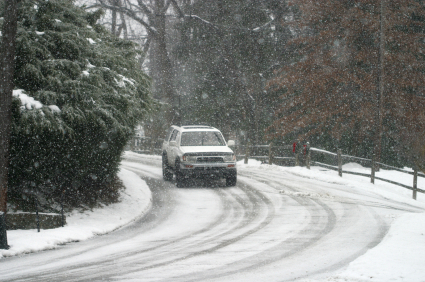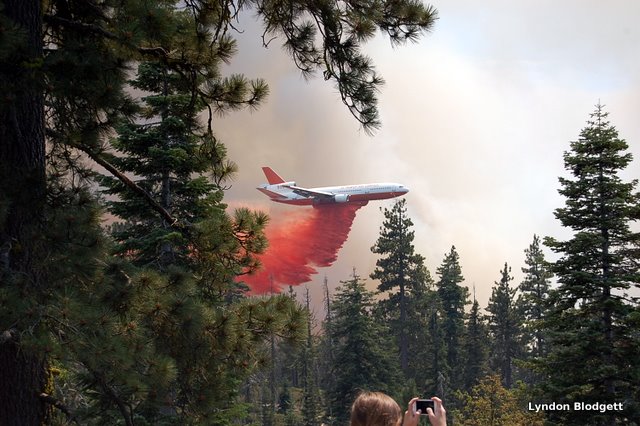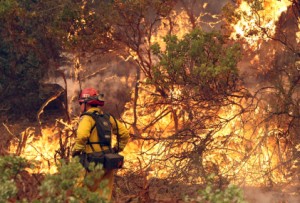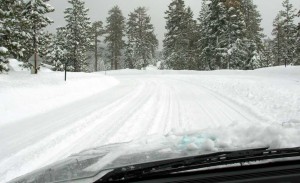 Even though last winter was mild in terms of precipitation, record snow fall over the winter of 2010/2011 brought a lot of grief to those who travel in the Sierras. One way you can get to your mountain destination safely is to plan your trip, know the conditions, and be prepared. The first step in being prepared is to make sure your vehicle is ready for the hard winter conditions ahead.
Even though last winter was mild in terms of precipitation, record snow fall over the winter of 2010/2011 brought a lot of grief to those who travel in the Sierras. One way you can get to your mountain destination safely is to plan your trip, know the conditions, and be prepared. The first step in being prepared is to make sure your vehicle is ready for the hard winter conditions ahead.
AAA recommends the following to help get ready for winter:
Winter Car Care Checklist
Battery and Charging System– Have the battery and charging system tested by a trained technician. A fully charged battery in good condition is required to start an engine in cold weather. AAA members can request a visit from an AAA Mobile Battery Service technician who will test their battery and replace it on-site, if necessary. AAA Approved Auto Repair facilities can also test and replace weak batteries.
Battery Cables and Terminals– Check the condition of the battery cables and terminals. Make sure all connections are secure and remove any corrosion from the terminals and posts.
Drive Belts– Inspect belts for cracks or fraying. Don’t just look at the smooth top surface of the belt, but turn it over and check the grooved underside where most belt wear occurs.
Engine Hoses–Visually inspect the cooling system hoses for leaks, cracks or loose clamps. Also, squeeze the hoses to check for any that may be brittle or excessively spongy feeling and in need of replacement.
Tire Type and Tread– In areas with heavy winter weather, changing to snow tires on all four wheels will provide the best winter traction. All-season tires will work well in light to moderate snow conditions, providing they have adequate tread depth. If any tire has less than 3/32-inches of tread, it should be replaced. Uneven wear on the tires can indicate alignment, suspension or wheel balance problems that should be addressed to prevent further damage to the tires.
Tire Pressure– Check tire pressure more frequently during winter months. As the temperature drops, so will the pressures in the tires — typically 1 PSI for every 10 degrees Fahrenheit. The proper tire pressure levels can be found on a sticker located on the driver’s side door jamb. And, don’t forget to check the spare.
Air Filter– Check the engine’s air filter by holding it up to a 60-watt light bulb. If light can be seen through much of the filter, it is still clean enough to work effectively. However, if the light is blocked by most of the filter, replace it.
Coolant Levels– Check the coolant level when the engine is cold. If the coolant level is low, add a 50/50 solution of coolant and water to maintain the necessary antifreeze capability. The level of antifreeze protection can be checked with an inexpensive tester available at any auto parts store.
Lights– Check the operation of all headlights, taillights, emergency flashers, turn signals, brake lights and back-up lights. Replace any burnt out bulbs.
Wiper Blades – Blades should completely clear the glass with each swipe.
Replace blades that leave streaks or miss spots. In areas with snowy conditions, consider installing winter wiper blades that wrap the blade in a rubber boot to prevent ice and snow buildup that can prevent good contact between the rubber blade and the glass.
Washer Fluid– Fill the windshield washer fluid reservoir with a cleaning solution that has antifreeze components for cold weather use.
Brakes– Have brakes inspected by a certified technician to ensure all components are in good working order.
Transmission, Brake and Power Steering Fluids– Check all fluids to ensure they are at or above the minimum safe levels.
Emergency Road Kit – Update the car’s emergency kit for winter weather. The kit should include:
– Bag of abrasive material (sand, salt, cat litter) or traction mats
– Snow shovel
– Snow brush
– Flashlight with extra batteries
– Window washer solvent
– Ice scraper
– Cloth or roll of paper towels
– Jumper cables
– Gloves, hats and blankets
– Warning devices (flares or triangles)
– Drinking water
– Non-perishable snacks (energy or granola bars)
– Extra clothes
– First-aid kit
– Basic toolkit (screwdrivers, pliers, adjustable wrench)
– Mobile phone and car charger with important numbers programmed in it, including a roadside assistance provider
 Many homeowners are opting to install a portable or permanent whole house generator to keep the lights on during the heaviest winter storms that often blow through our area.
Many homeowners are opting to install a portable or permanent whole house generator to keep the lights on during the heaviest winter storms that often blow through our area.

 Fire Danger Increasing
Fire Danger Increasing It’s old news for some, but many may not know that a new state-wide law went into effect on 7/1/11 which requires homes that burn fossil fuels, and/or homes with an attached garage, to have a Carbon Monoxide Detector.
It’s old news for some, but many may not know that a new state-wide law went into effect on 7/1/11 which requires homes that burn fossil fuels, and/or homes with an attached garage, to have a Carbon Monoxide Detector.
 Ok we admit: this is late in the season and there isn’t a lot of snow on the ground right now. But there are a series of storms moving in this week and being prepared for winter driving conditions in the mountains can save you a lot of time and trouble. It can even save your life. Be prepared.
Ok we admit: this is late in the season and there isn’t a lot of snow on the ground right now. But there are a series of storms moving in this week and being prepared for winter driving conditions in the mountains can save you a lot of time and trouble. It can even save your life. Be prepared.
 The days are at their shortest but there are still many healthy fruits and vegetables at their prime during the winter season. Enjoy nutrient-packed
The days are at their shortest but there are still many healthy fruits and vegetables at their prime during the winter season. Enjoy nutrient-packed